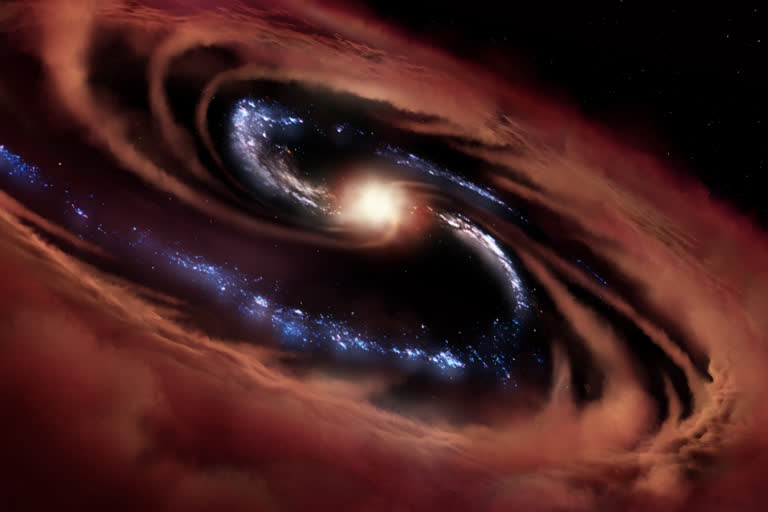Washington: "This shows us that the growth of active black holes doesn't stop star birth instantaneously, which goes against all the current scientific predictions," said study co-author Allison Kirkpatrick, Assistant Professor at the University of Kansas in Lawrence, Kansas, US.
"It's causing us to re-think our theories on how galaxies evolve."
SOFIA, a joint project of NASA and the German Aerospace Center, DLR, studied an extremely distant galaxy, located more than 5.25 billion light-years away called CQ4479.
At its core is a special type of quasar that was recently discovered by Kirkpatrick called a "cold quasar."
In this kind of quasar, the active black hole is still feasting on material from its host galaxy, but the quasar's intense energy has not ravaged all of the cold gas, so stars can keep forming and the galaxy lives on.
This is the first time researchers have a detailed look at a cold quasar, directly measuring the black hole's growth, star birth rate, and how much cold gas remains to fuel the galaxy.
"We were surprised to see another oddball galaxy that defies current theories," said Kevin Cooke, a postdoctoral researcher at the University of Kansas in Lawrence, Kansas, and lead author of this study.
"If this tandem growth continues both the black hole and the stars surrounding it would triple in mass before the galaxy reaches the end of its life."
As one of the brightest and most distant objects in the universe, quasars, or "quasi-stellar radio sources," are notoriously difficult to observe because they often outshine everything around them.
They form when an especially active black hole consumes huge amounts of material from its surrounding galaxy, creating strong gravitational forces.
Also Read: China and Japan race to dominate the future of high-speed rail
(Inputs from IANS)



